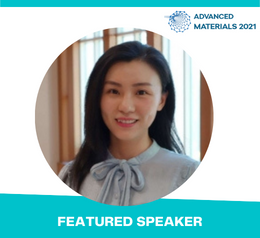Scholars International Conference on
Advanced Materials Science and Engineering
THEME: "Current and Emerging Trends in Materials Research and Engineering"
 25-26 Nov 2021
25-26 Nov 2021  ONLINE & VIRTUAL
ONLINE & VIRTUAL THEME: "Current and Emerging Trends in Materials Research and Engineering"
 25-26 Nov 2021
25-26 Nov 2021  ONLINE & VIRTUAL
ONLINE & VIRTUAL 
University of Oklahoma, United States
Title: Polysaccharide chemistry and rheology
Jie Gao’s current research focuses on functionalizing and manufacturing advanced materials for energy and water applications. These works include controlling porous morphology of polymer-based materials for membranes, functionalizing polysaccharide for improved rheological properties, as well as developing processes to make well-defined polysaccharide microparticles. One of her major research directions is water treatment. She has expertise in detecting organic and inorganic species in water as well as removing those undesired using state-of-the-art techniques. Leveraging the fundamental knowledge gained in the labs, she also developed industrial-scale procedures and equipment.
Natural polysaccharides are the macromolecular polymers obtained from sustainable sources such as plant and organism. The abundance of polysaccharide determines its economic value as a renewable resource. The molecular weight of guar gum is the highest of all known natural polymers produced of industrial gums, which enables this water-soluble polysaccharide to produce highly viscous solutions at low polymer concentrations. It can be a suitable replacement of some synthetic polymers due to low production cost and biodegradation capability. Guar thus plays a crucial role in the oil field, food, pharmaceutical and cosmetic industries, and chemical modifications will be valuable for further enhancing its performance. Here we explored efficient procedures like carboxymethylation and hydroxypropylation to modify and change their properties such as improved solubility and stability. The chemistry processes were specifically developed for guar splits. NMR spectroscopy and wet chemistry method were applied to quantify the conversion as a function of reaction time. For the first time, kinetic models were proposed, enabling the derivation of a reaction rate law for guar modification. In addition, borate and zirconium cross-linkers were applied to study the effect of cross-linking on the product, establishing a relationship between the structure and the rheological properties. The understanding from the studies laid the foundation for an engineering design to functionalize guar splits and broaden its industrial applications.